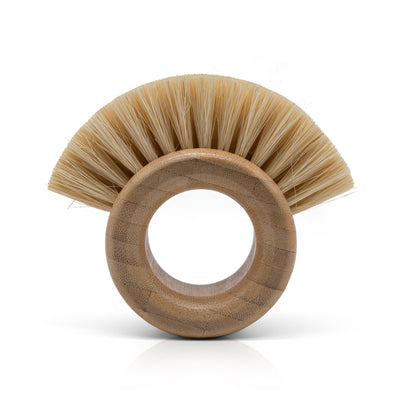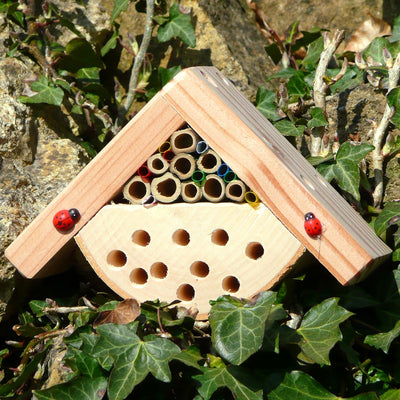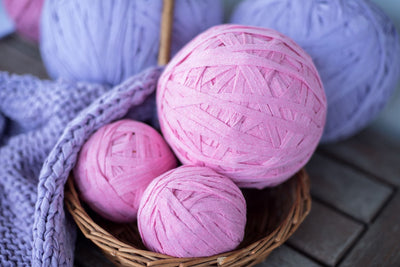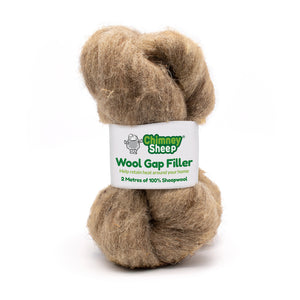What is a cylinder jacket?
A cylinder jacket is an insulated cover that wraps around your hot water cylinder, also known as your hot water heater or tank. This cosy shield is designed to retain heat and prevent heat loss so that your hot water stays hotter for longer and more importantly, you spend less money heating up water.
Cylinder jackets are usually made of synthetic materials like foam or fibreglass, but this Sheep Wool Cylinder Jacket uses pure natural sheep’s wool, bundled into four easy-to-install cotton panels secured with two straps and a tie cord. The panels are pre-fitted with brass eyelets to ensure a snug fit and make installation a breeze.
They’re super simple to use and easy to fit - it’s like putting a cardigan on a baby! The sheep wool insulation wraps around your hot water tank like a glove, keeping precious heat where it belongs.
Why should I insulate my hot water heater?
Long story short: if you don’t have your hot water tank insulated, you’re basically just throwing money down the drain.
While your hot water heater doesn’t have to be insulated, you’d be silly not to when you look at the potential cost savings.
Adding insulation is one of the most effective ways to lower water heating bills, which account for about 18% of a home’s energy use. Without a jacket, your water heater could be leaking heat and money!
An uninsulated hot water tank will lose a lot of its warmth to the surroundings. That wasted energy must constantly be replaced to keep water hot for all your taps and showers. This heat loss can add up to hundreds of pounds on utility bills per year!
Insulating your hot water cylinder prevents unnecessary heat loss, so less energy needs to be used to maintain its temperature. It’s a simple upgrade that can lower your energy use and your utility bills.
Why choose sheep wool insulation for your hot water tank?
When it comes to insulating your hot water cylinder, sheep wool offers clear and cost-effective advantages over cheaper synthetic alternatives like fibreglass.
First of all, sheep wool is a natural insulating material that’s biodegradable, renewable and sustainable. It has fantastic thermal properties because the crimp of the wool fibres create millions of tiny air pockets that prevent warmth from escaping your tank. And, the unique production process of this Eco-Economiser from Sheep Wool Insulation makes it the highest performing fibrous insulation available on the market.
Unlike synthetic insulation, a sheep wool insulator jacket on your hot water tank won't release annoying fibreglass particles that end up clinging to your clothes, towels, and sheets stored in the airing cupboard.
Installing this sheep wool cylinder jacket is the obvious choice if you want to save energy, save money, and reduce your impact on the environment. Its unmatched efficiency pays dividends on your investment for years to come!
Is it worth insulating my hot water tank?
Draught-proofing and insulating your home are great ways to cut down energy bills, and installing an insulating cylinder jacket on your hot water tank is one of the most economical home upgrades you can make.
This eco-friendly water heater insulator will start slashing your hot water heating bills instantly - just look at the figures and see for yourself!
While this sheep wool cylinder jacket may cost a little more upfront than a basic synthetic one, it's much friendlier to the environment and will still pay for itself in as little as 4.5 months!
And, with the rising energy costs we’re seeing in the UK, it makes sense for anyone to invest in this Eco-Economiser. It’s not just about staying warm, but about maximising energy efficiency and cutting down on heating expenses, especially during chilly seasons.
How do I install insulation on my hot water cylinder?
Fitting an insulation jacket on your hot water heater is super simple. Here are the installation instructions for the Sheep Wool Insulation Eco-Economiser Cylinder Jacket (you’ll also receive a copy of these with your order):
- Position the panels vertically around the cylinder, with the eyelets at the top, so that the connecting pipework passes through the gaps between them.
- Pass the supplied tie cord through the eyelets and tie off so that the panels fully cover the top of the cylinder.
- Use the two straps to secure the panels in the final position. Be sure not to over-tighten these straps as the panels will insulate better when they’re not compressed.
What is a cylinder jacket?
A cylinder jacket is an insulated cover that wraps around your hot water cylinder, also known as your hot water heater or tank. This cosy shield is designed to retain heat and prevent heat loss so that your hot water stays hotter for longer and more importantly, you spend less money heating up water.
Cylinder jackets are usually made of synthetic materials like foam or fibreglass, but this Sheep Wool Cylinder Jacket uses pure natural sheep’s wool, bundled into four easy-to-install cotton panels secured with two straps and a tie cord. The panels are pre-fitted with brass eyelets to ensure a snug fit and make installation a breeze.
They’re super simple to use and easy to fit - it’s like putting a cardigan on a baby! The sheep wool insulation wraps around your hot water tank like a glove, keeping precious heat where it belongs.
Why should I insulate my hot water heater?
Long story short: if you don’t have your hot water tank insulated, you’re basically just throwing money down the drain.
While your hot water heater doesn’t have to be insulated, you’d be silly not to when you look at the potential cost savings.
Adding insulation is one of the most effective ways to lower water heating bills, which account for about 18% of a home’s energy use. Without a jacket, your water heater could be leaking heat and money!
An uninsulated hot water tank will lose a lot of its warmth to the surroundings. That wasted energy must constantly be replaced to keep water hot for all your taps and showers. This heat loss can add up to hundreds of pounds on utility bills per year!
Insulating your hot water cylinder prevents unnecessary heat loss, so less energy needs to be used to maintain its temperature. It’s a simple upgrade that can lower your energy use and your utility bills.
Why choose sheep wool insulation for your hot water tank?
When it comes to insulating your hot water cylinder, sheep wool offers clear and cost-effective advantages over cheaper synthetic alternatives like fibreglass.
First of all, sheep wool is a natural insulating material that’s biodegradable, renewable and sustainable. It has fantastic thermal properties because the crimp of the wool fibres create millions of tiny air pockets that prevent warmth from escaping your tank. And, the unique production process of this Eco-Economiser from Sheep Wool Insulation makes it the highest performing fibrous insulation available on the market.
Unlike synthetic insulation, a sheep wool insulator jacket on your hot water tank won't release annoying fibreglass particles that end up clinging to your clothes, towels, and sheets stored in the airing cupboard.
Installing this sheep wool cylinder jacket is the obvious choice if you want to save energy, save money, and reduce your impact on the environment. Its unmatched efficiency pays dividends on your investment for years to come!
Is it worth insulating my hot water tank?
Draught-proofing and insulating your home are great ways to cut down energy bills, and installing an insulating cylinder jacket on your hot water tank is one of the most economical home upgrades you can make.
This eco-friendly water heater insulator will start slashing your hot water heating bills instantly - just look at the figures and see for yourself!
While this sheep wool cylinder jacket may cost a little more upfront than a basic synthetic one, it's much friendlier to the environment and will still pay for itself in as little as 4.5 months!
And, with the rising energy costs we’re seeing in the UK, it makes sense for anyone to invest in this Eco-Economiser. It’s not just about staying warm, but about maximising energy efficiency and cutting down on heating expenses, especially during chilly seasons.
How do I install insulation on my hot water cylinder?
Fitting an insulation jacket on your hot water heater is super simple. Here are the installation instructions for the Sheep Wool Insulation Eco-Economiser Cylinder Jacket (you’ll also receive a copy of these with your order):
- Position the panels vertically around the cylinder, with the eyelets at the top, so that the connecting pipework passes through the gaps between them.
- Pass the supplied tie cord through the eyelets and tie off so that the panels fully cover the top of the cylinder.
- Use the two straps to secure the panels in the final position. Be sure not to over-tighten these straps as the panels will insulate better when they’re not compressed.






























